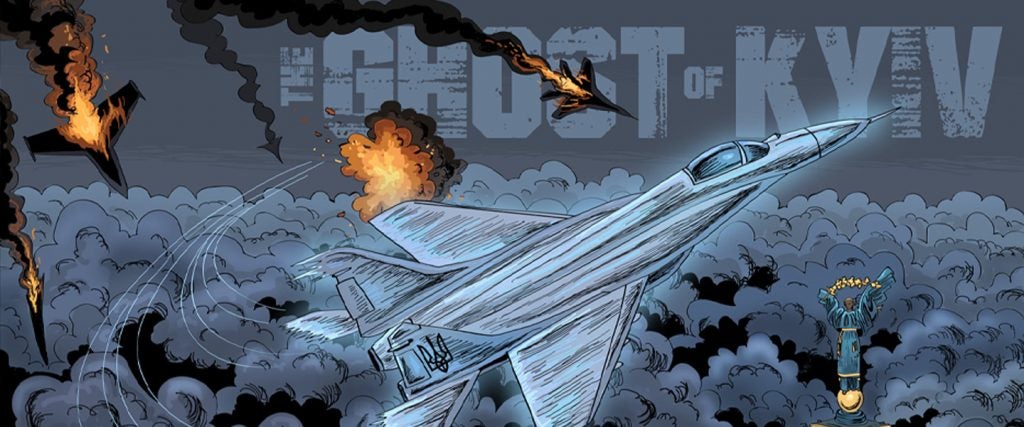“Fake news.” It dominated the years Donald Trump spent in the White House, a phrase he borrowed from the Democrats to warn America that false and fabricated media had an outsize effect on public opinion. In Trump’s definition, of course, fake news encompassed every unflattering piece of journalism about him. But with both sides hammering the idea, millions woke up to the reality that misinformation is a powerful weapon. Liberal institutions fell into a fact-checking frenzy, keeping count of outrageous lies. MAGA nation sought out an alternative, hoax-peddling free press that promised to counter the phony “mainstream” narrative. You couldn’t just have your trusted sources — you also sought to discredit many others.
Now, in the midst of Russia’s attack on Ukraine, a far more intense and chaotic propaganda war is unfolding at great speed. A savvy consumer would trust very little of what they’re hearing about what’s happening in the region, particularly the reports that go viral on social media. But, faced with the unlikelihood of certain stories, some commentators are insisting that we treat them as genuine, if only to support the Ukrainian resistance and boost the country’s morale.
“The Ghost of Kyiv,” an ace pilot said to have shot down a number of Russian aircraft in a MiG-29 fighter jet, is the most popular of the active urban legends. Some evidence of the Ghost is probably fake, like this footage created in Digital Combat Simulator. Some comes from major national figures like former Ukrainian President Petro Poroshenko, who tweeted a 2019 photo of a pilot he identified as the Ghost — a claim that is more or less impossible to verify — and still more comes from the current government, with SBU, the Security Service of Ukraine, stating in a Facebook post that the Ghost had eliminated 10 targets by the end of February. This week, the former People’s Deputy of Ukraine, Ihor Mosiychuk, told his Facebook followers that the Ghost had been downed himself, but survived, was rescued and resumed flying missions.
If all this sounds too good to be true, that’s surely the point: The myth is meant to give people hope while demoralizing the invaders. In this case, it appears that the Ukrainian government (and ex-officials) are seizing what advantage they can from a hero forged in the collective consciousness of the internet. Elsewhere, they might be planting their own material. Take, for example, the announcement that they foiled an assassination attempt on President Volodymyr Zelenskyy after receiving tips from members of Russia’s own intelligence community. As national security correspondent Zach Dorfman tweeted, it’s unclear whether this is true, but either way, that version of events is perfectly tailored to sow paranoia within the enemy’s ranks.
Western tabloids have also capitalized on — and helped to spread — unconfirmed rumors that romanticize the Ukrainian military, even acknowledging their readership’s hunger for these inspirational fantasies. The Spanish sports newspaper Marca ran the headline “If You Liked the ‘Ghost of Kyiv,’ You Will Love the ‘Ukrainian Reaper,’” with the story that followed citing a single, unsubstantiated tweet from Twitter user @WW3updated. The feed is totally lacking in credentials or context and only appeared on the platform in February of this year. Three days after that piece was published, U.K. paper The Sun also ran with hearsay on the Ukrainian Reaper, allegedly a sniper named Volodymyr Vist who had 20 confirmed kills. There’s no reason to believe it — unless you find a random photo of a soldier with a gun entirely convincing.
Just as we’ve taken it upon ourselves to separate fact from fiction in domestic politics (with admittedly mixed results), we should be vigilant against spurious accounts from abroad. Especially those that seem curated for an audience watching the conflict on screens, in bits and pieces. When we say tall tales are vital for keeping hope alive, whose hope do we mean — theirs, or ours? We get to frame the crisis as a movie, something with avengers to root for and faceless villains to be punished. The struggle over there will never be that simple, nor glorious.
Again, we have to accept that we don’t have access to many details, let alone the entire picture. For every awesome act of defiance we’ve actually corroborated, like the lone woman advising Russian troops to carry sunflower seeds in their pockets so that something will grow when they die on Ukrainian soil, another is caught between illusion and certainty: the 13 soldiers on Snake Island who were valorized for telling a Russian ship “go fuck yourselves” in a final stand were not killed as initially thought, but captured, the Ukrainian Navy later said. It was a display of great courage all the same, but a reminder of how drastically information can shift.
And with multiple governments spinning new situations as they develop, you’ll no sooner share news than see it contradicted. It’s a towering bonfire of untruth. You don’t have to pour gas on it.

